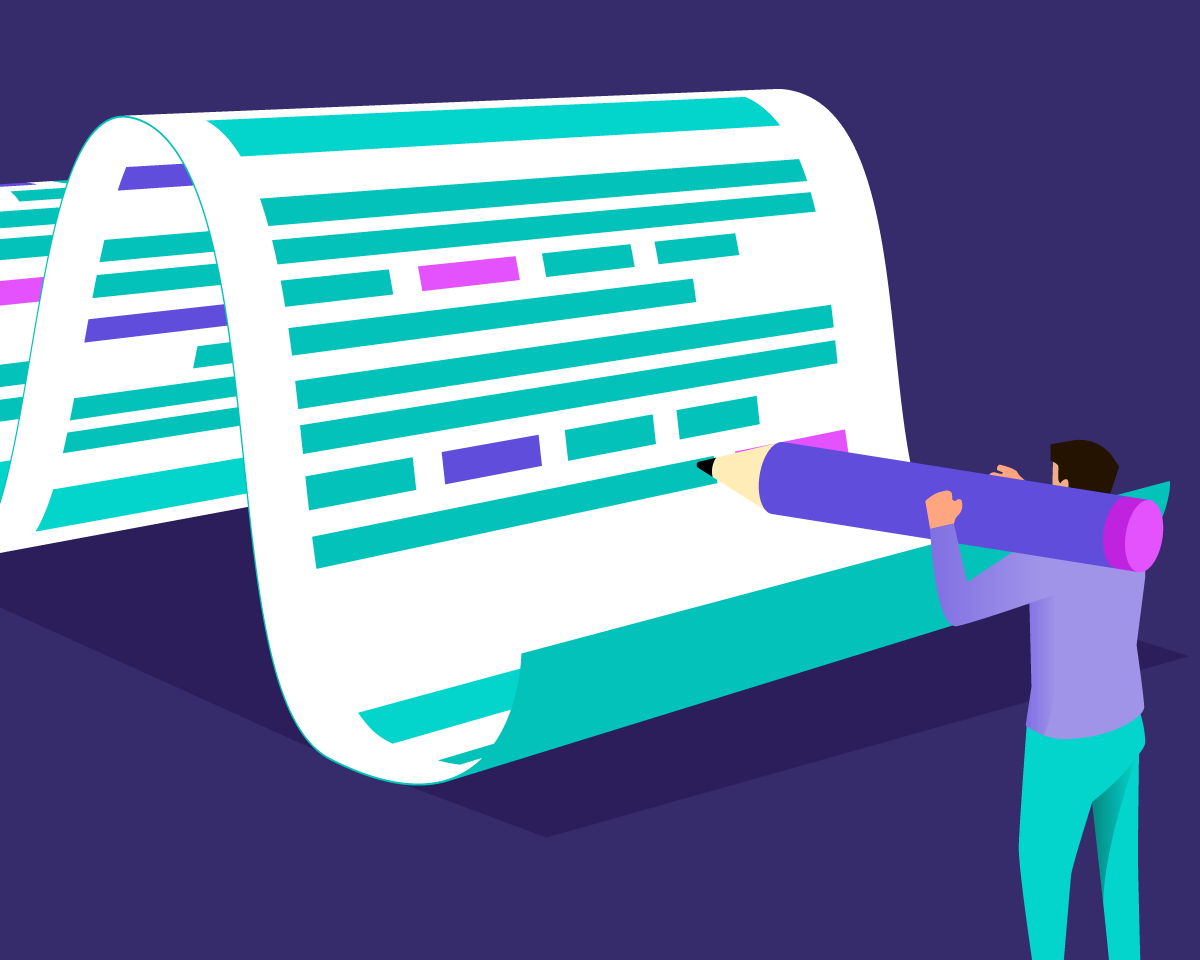A proposal cover letter is your first opportunity to stand out.
Before anyone reads your full response, they’ll see that single page. And in a competitive bidding process, first impressions matter. A strong cover letter shows you understand the client’s needs, bring the right expertise, and are worth their time. If you’re still recycling the same generic intro for every RFP, it’s time to rethink your approach.
In this article, you’ll learn how to write custom proposal cover letters that grab a prospect’s attention and increase your chances of winning RFP responses. Plus, five examples of real proposal cover letters from industry pros.
In this article, you’ll learn:
- What is a Proposal Cover Letter?
- What to Include in a Proposal Cover Letter
- How to Write a Proposal Cover Letter
- 5 Real Proposal Cover Letter Examples ⭐
- Next Steps: Build Quality Proposals Faster
What is a Proposal Cover Letter?
A proposal cover letter is a single-page document used to pitch your business offerings to a potential client. In it, the customer can tell whether you’re genuinely engaged and have done your research—or if you’ve simply copy and pasted generic language from past business proposals.
It’s also your first opportunity to convince a client as to why they should continue reading your proposal. Considering the average team spends 32 hours writing a single RFP response, it’s critical that your proposal cover letter makes a good impression.
“This is the most important five paragraphs one can write as it’s the only part everyone will read. You must knock it out of the park or you’ll lose.”

What Should You Include in a Proposal Cover Letter?
Like any good cover letter, your proposal should open with a unique offer or positioning. It’s important to establish early on why your team is best suited to solve a client’s problem.
A strong proposal cover letter includes:
- A greeting: Introduce your company and what you do.
- Clear summary: Describe your value propositions at a high-level. Be sure to connect these points to your client’s needs. (Also known as an executive summary.)
- Personalized offer: Explain to the client what you can uniquely provide to solve their problem.
- Relevant references: Help the prospect understand why they should choose you over competitors.
- Visuals: If you have a designer on your team, include visuals that help emphasize the most important content on this page. For example, use callout boxes to make value propositions stand out for busy procurement teams who are skimming the page.
From the offer you present, to the visuals you include, the details in your proposal cover letter should be all about the client. The goal is to show how your company shines before they even get into the details of your proposal. Demonstrate the qualities that you bring to this potential customer by starting out your relationship on the right foot.
Jon Williams, Managing Director of Strategic Proposals, shares the key points you should concisely hit to be successful.
“Thank the customer, show enthusiasm, demonstrate senior sponsorship, briefly introduce win themes–and then shut up and leave the rest to a brilliant exec summary!”

How to Write a Winning Proposal Cover Letter
From reading the RFP thoroughly, to outlining a clear offer, there are six critical steps that seasoned proposal professionals recommend you take to craft a quality cover letter. (Psst…you can fast-track these steps by using an AI powered tool.)
Step 1: Read the RFP Cover to Cover
This step seems obvious, but it’s surprising how many teams skip it. You must read the RFP thoroughly, from cover to cover, before beginning your letter. If you don’t, you’re doing your probability of win (PWin) a disservice.
While reading, take note of any recurring themes from your prospect. Perhaps they focus on quality of design and ease of use. Or maybe they emphasize needing certain functionalities or features—whatever the case, Kori Warriner of KCI Technologies recommends you consider the following questions as you read through the request for proposal:
Questions to consider:
- What is the client’s reason behind the project? (revitalization, aging infrastructure, etc.)
- Where is the funding for the project coming from?
- Does the client have any hot-button issues regarding the project?
- What is the desired end-result?
- What would speak to the client? (retirement-friendly, aesthetics, budget, etc.)
“You need to make the client feel as though you are speaking directly to them.”

While questions may differ by industry, the idea remains the same. Reading the RFP thoroughly helps you better understand the problems your prospect is facing. Which in turn help you paint a clearer picture of how your company can support them.
(It can also help spark ideas for win themes, or specific language, that truly resonates with the prospect—more on that later.)
“Instead of saying ‘we are pleased’ or other overused statements such as that, I introduce my company, and then switch back to talking about what we can do to help the client reach their goals,” Kori explains.
Step 2: Capture Your Prospect’s Attention Early
Chances are, your prospect is extremely busy. They’re likely to skim your proposal cover letter—which is why you should focus on making it memorable. Use it to create a connection to your prospect and capture their attention early in the proposal.
In the structure of a proposal, the first paragraph is the best place to earn your reader’s attention, shares Senior Proposal Consultant Kelly Allen.
“Try to capture the reader in the first paragraph by relating to them in some way. If they are a current client, leverage your relationship. If not, demonstrate a clear understanding of what they need.”
Kelly Allen, Senior Proposal Consultant, UKG (Ultimate Kronos Group)
Step 3: Use Clear, Competitive Win Themes
Once you identify their distinct needs, you can formulate which key themes need to be identified in your cover letter. Then, narrow it down to the most persuasive reasons that your prospect should choose your proposal over a competitor. Eileen Kent, President of Custom Keynotes, explains that these are also known as “win themes”.
Win themes should be based on what the customer told you they wanted. Position yourself as the one company that can deliver exactly what your prospect is looking for. To do this well, it’s essential that you also understand what your competition is doing.
Here’s how to brush up on what your competitors are offering:
- Review competitors’ websites
- Read competitors’ financial statements
- Look at review websites like G2 or Forrester reports including your competition
- Ask if clients are willing to share competitors’ past RFPs (You never know, unless you ask)
At this stage, you’ll want to focus on how you can stand out from the competition. Eileen also recommends acknowledging any elephants in the room. By that, she means anything that the client may consider your team’s weakness.
She recommends addressing weak points head on to leave a good impression, “The elephant in the room could be your business size. Address it by talking about how you formed a tight team who have exceeded performance expectations, and worked together for years, so they see that as a strength instead,” she explains.
Step 4: Provide a Personalized Offer
Now that you’ve grabbed your prospect’s attention, you need to maintain it. Do this by outlining clear benefits, which speak directly to their pain points in an enticing and clear way.
You should outline how your product will positively impact the buyer and identify what they will get out of your partnership.
“Choose the top 3-5 features of your solution and describe how they will benefit your customer in a single line. Be direct: Here’s what we offer. Here’s how it will solve your problem.”

Step 5: Use a Strong Closing Statement
Your closing statement should be concise, reiterate your capabilities, and highlight the value you deliver. But don’t forget that it’s also an opportunity to connect with your prospect through the proposal process.
“To build a connection, you have to ignore outdated writing advice and not be afraid to use real language” says Rebecca Baumgartner, Sr. Manager, Proposals, PFS.
“Whoever is reading your cover letter can immediately tell if you’re hiding behind jargon or parroting the language of the RFP because you don’t understand what they need,” she explains.
“But when you write authentically, you have the opportunity to show the client you’ve been listening.”
“A great cover letter isn’t stuffy or formal–it’s a conversation between real people, a chance to put aside the technical language of procurement and connect with the human being on the other side.”

Step 6: Add the Finishing Touches
When crafting your proposal cover letter, there are a few final checkpoints to leave your prospect with a good impression.
Graphics aren’t necessary for a proposal cover letter, but they can be helpful. For example: highlighting a quote from a customer in a different font, or using callout boxes to emphasize your key value propositions. Use visuals that help to emphasize your main points, not distract from them.
Here’s what Izane Cloete-Hamilton, CPP APMP, of nFold recommends.
- Use a company letterhead
- Address the letter to the individual specified in the RFP
- Sign the cover letter from a senior person at your company
- If the response is from a strategic partnership between two companies, use dual signatures
- Ensure your letter is no longer than one page
“Sign the proposal cover letter from the highest-level person with signature authority, preferably someone that the customer knows personally.”

Proposal Cover Letters (5 Real Templates)
Now that you know what steps to follow, it’s time to look at some real examples of business proposal cover letters. While you don’t want to copy a boilerplate letter, these templates may provide helpful guidance for your next proposal.
Here are the types of proposal cover letter examples you’ll see above:
- Real proposal cover letter example from a security company
- Example proposal cover letter for an amusement park
- Real proposal letter & executive summary from an enterprise design consultancy
- Winning cover letter example from KCI technologies
- Another proposal cover letter example from a security company
Looking for a sample grant proposal cover letter? Check out this article.
“Remember, your cover letter isn’t about you, it’s about your client. Let them know that you understand them. Then you can talk about how your company can solve their potential challenge.”

Next Steps: Build Quality Proposals Faster
To make more time for writing winning proposal cover letters, you’ll need to make some efficiency gains in your overall RFP process. Start by setting your team up with a proposal software that can improve speed and collaboration amongst your team.
Take Aspen Medical for example. Their business development team started using Loopio’s proposal platform in October of 2019. Within a few short months, they were putting together proactive proposals in just 15-30 minutes and seeing a big return on investment (ROI).
In fact, our 2025 RFP Trends Report found that this year, 61% of RFP software users saw ROI within one year. This represents a more than 10% year over year increase.
If you’re looking to improve the pace of your next proposal, try Loopio’s software.
Improve Your Proposal Writing 📝
Want to learn how to master your craft? Read more about proposal writing skills or how to craft a repeatable RFP response template.
